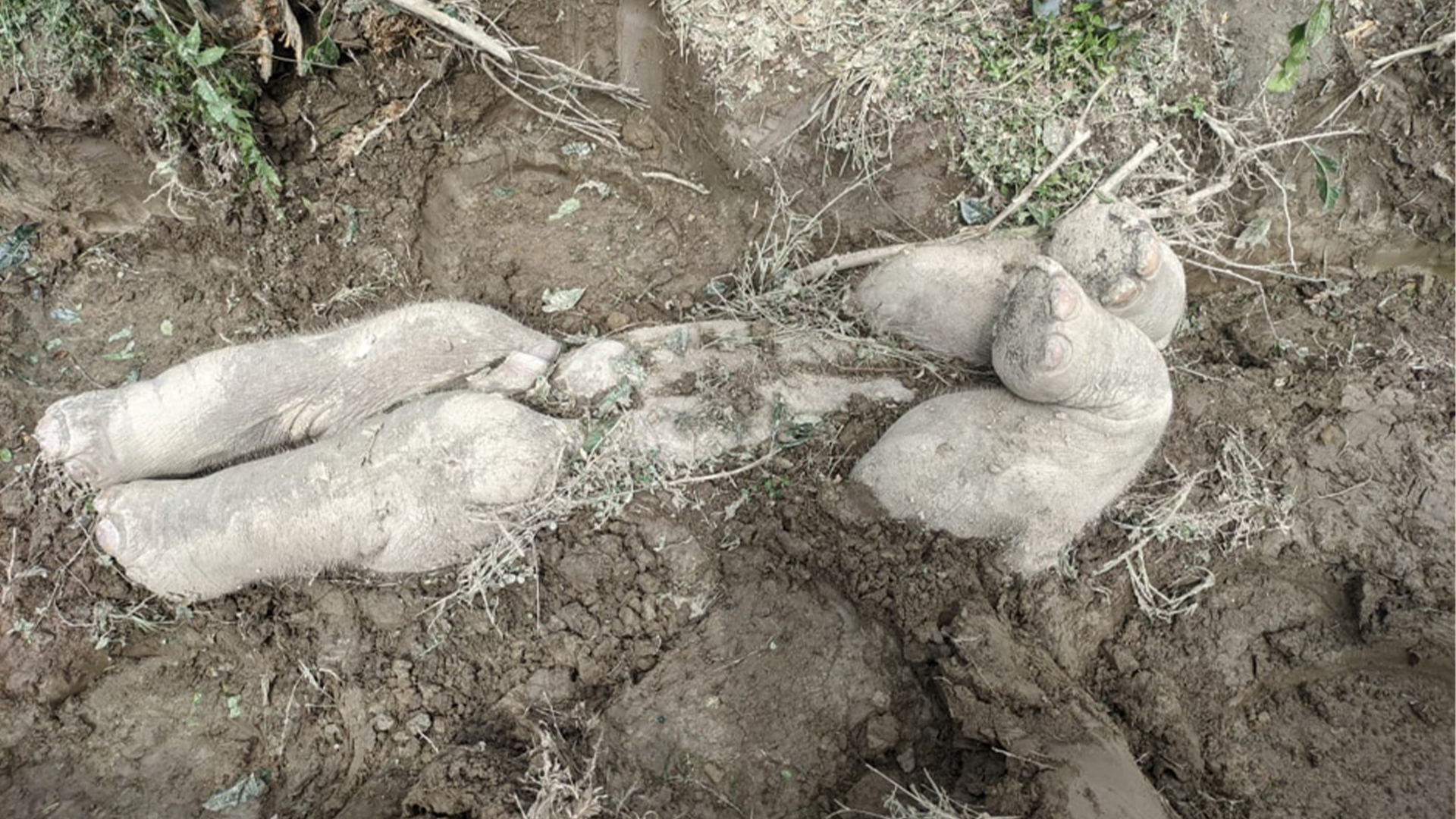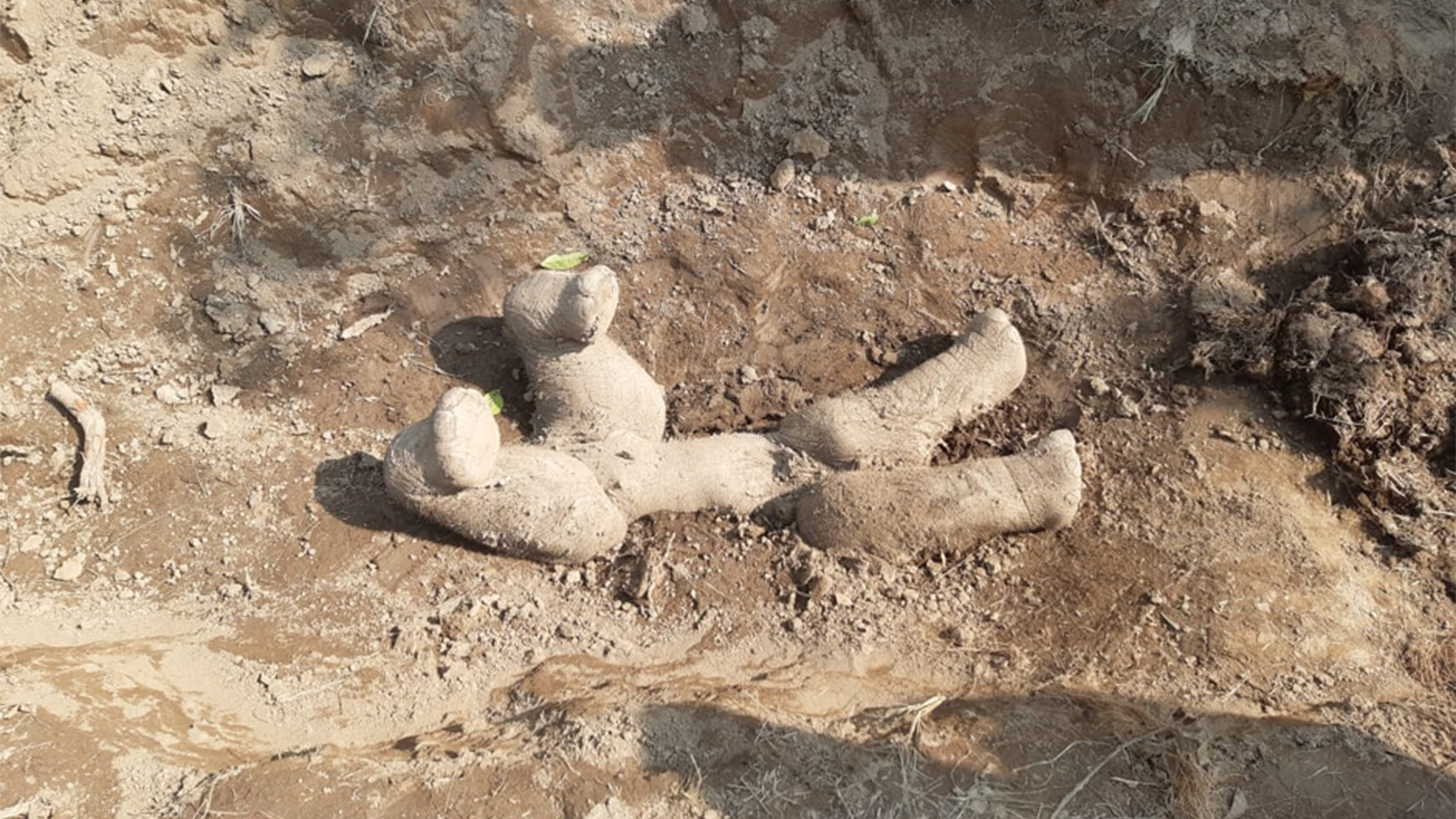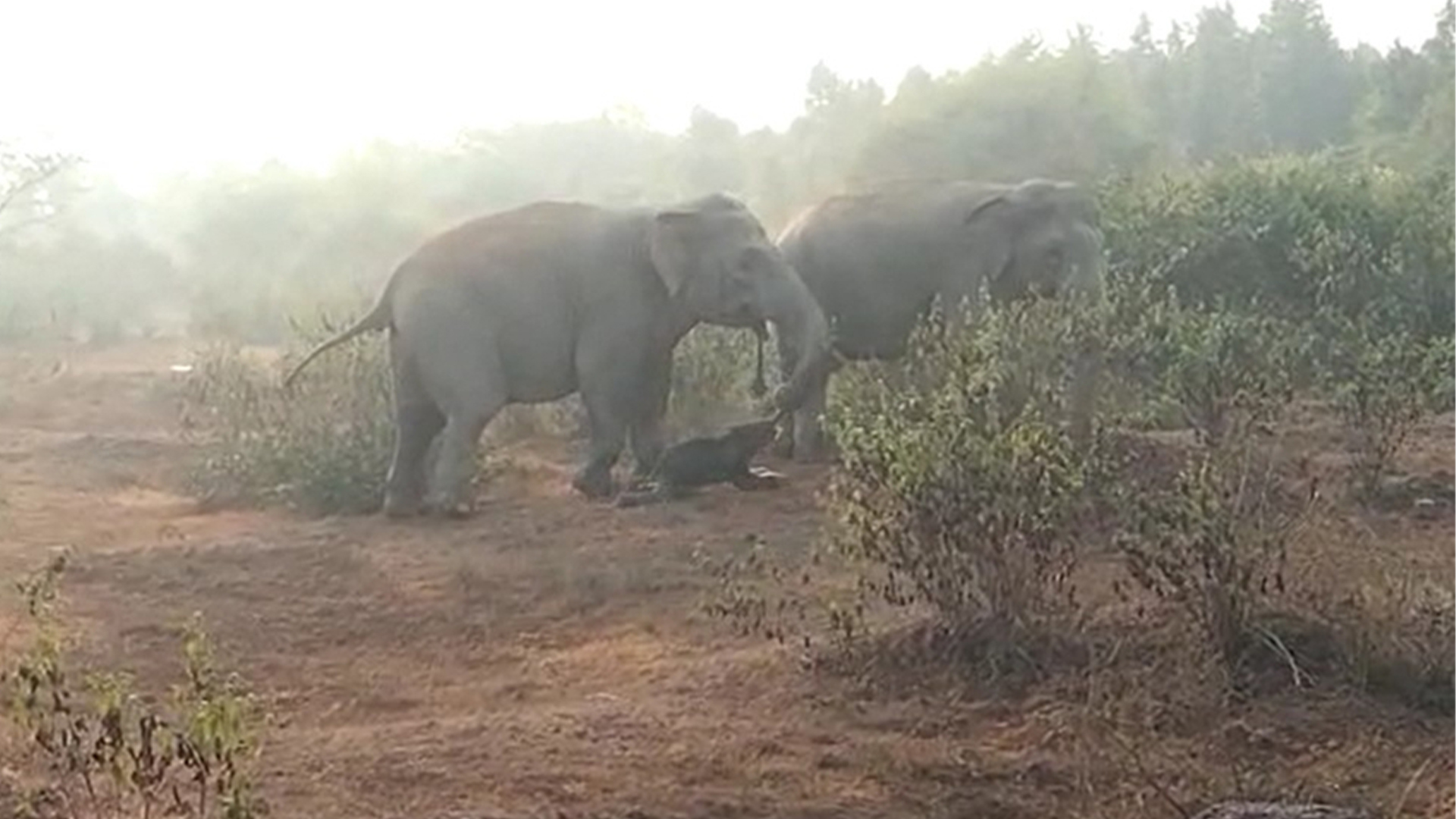'They are very well aware of their agency': Elephant calf burial ritual discovered in India
Elephant burial rituals have been discovered in India, with herd members placing calves upside down in irrigation pits then covering the bodies with soil.

Asian elephants bury their calves with their legs poking out of the ground, researchers have observed. The calves were 1 year old or less and were transported to premade burials of sorts — irrigation drains on tea estates in India — by herd members, before being placed in holes and covered in soil.
In a study published Feb. 26 in the Journal of Threatened Taxa, researchers documented five calf burials among Asian elephants (Elephas maximus) in the eastern Himalayan floodplains of northern West Bengal.
Researchers have previously observed African forest elephants (Loxodonta cyclotis) performing burial practices, in which herd members cover their deceased companions and family members with branches and leaves. The new study provides the first record of Asian elephant burials and is the first known case of elephants using soil in burials, as well as specifically positioning the body.
Parveen Kaswan, an officer with the Indian Forest Service, and Akashdeep Roy, a researcher at the Indian Institute of Science Education and Research, spent 16 months reviewing literature relating to elephant burials and found five case reports that document this behavior.
Related: Asian elephant mom carries dead calf for weeks, new eye-opening videos reveal
They discovered the calf burials were highly organized: "They are very well aware of their agency," Roy told Live Science in an email. All calf deaths were natural, relating to respiratory failure or infection, post mortem analysis showed.
The elephants live in landscapes including fragmented forests, tea estates, agricultural lands and human settlements. Kaswan and Roy discovered the deceased elephant calves were carried by the trunk or legs over long distances,— in some cases traveling for 48 hours — to tea estates, where people had dug irrigation drains up to 26 inches (65 centimeters) deep.
Get the world’s most fascinating discoveries delivered straight to your inbox.
The calves were placed on their backs, with their legs facing up, and herd members then pushed soil on top of the carcass and leveled the ground. The researchers believe this positioning relates to how the body is placed into the pit. "It is the most accessible position to hold and put the carcass into the drain," Roy said. "This is also the position where more than one herd member can participate in the burial process."
He added that the elephants may also prioritize the head being buried, and to avoid the carcass being eaten by a carnivore.
After the burial, tea estate managers and villagers heard the elephants roaring and trumpetting. Roy believes these vocalizations were to "express agony and pain and to pay homage to the deceased calves."
Researchers also discovered that after the burials, elephants would avoid the paths where the calves had been left — even when the route had previously been regularly used. Roy said this may have to do with the elephants associating the path with "bad memories/bad milestones/bad omens," and to pay homage to the deceased.
The burial behavior, Roy said, highlights elephants' extreme intelligence. "They selected tea estates on purpose because they couldn't bury the carcass in villages as there is high human disturbance, and neither could they do it inside the forest where there are no pre-built trenches and knowing their inability to dig big holes in this biogeographic zone," he said.

Hannah Osborne is the planet Earth and animals editor at Live Science. Prior to Live Science, she worked for several years at Newsweek as the science editor. Before this she was science editor at International Business Times U.K. Hannah holds a master's in journalism from Goldsmith's, University of London.





